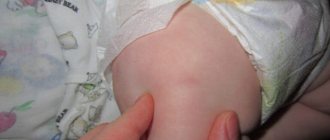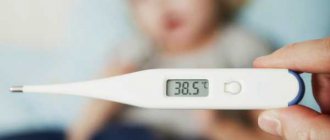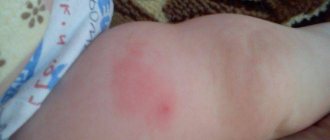The baby’s parents begin to get very worried if the vaccination site is swollen after DTP. Therefore, it is necessary to understand whether this reaction is normal, what the reason is, what its duration is and what needs to be done to prevent more serious complications. You should also read useful recommendations from doctors.
The injection site is red and swollen: normal or a complication?
The occurrence of swelling and swelling at the site of DTP vaccination in a child makes parents seriously worry.
Depending on individual factors, such a reaction may occur immediately after the injection or after some time. This process is not always pathological in nature. Therefore, there is no need to urgently contact a pediatrician. First, you need to determine what is within the normal range and what is a complication.
Redness, swelling and hardening of the skin at the injection site is a common reaction that occurs in approximately every fourth baby . As a result of repeated vaccinations, this side effect may intensify - this is due to the fact that children's immunity is finally formed.
The swelling at the injection site, which is up to eight centimeters in diameter, is normal and does not require any intervention. Exceeding eight centimeters in diameter indicates that the doctor’s requirements are not being followed, but such swelling is also safe.

DPT vaccine
Complications include swelling and redness of the injection site, accompanied by additional side effects, including:
- an increase in body temperature above +38 ⁰C, persisting for two days;
- suppuration;
- severe skin itching, accompanied by crying and irritability of the baby;
- significant swelling spreading to surrounding tissues;
- the occurrence of a skin rash.
If any of the above manifestations occur, it is recommended to show the baby to a pediatrician as soon as possible.
Contraindications
Before you make a final decision about whether your child needs DPT vaccination, make sure that your baby has no contraindications to such a procedure. These vaccinations are not recommended if:
- The baby was born premature and was kept in an oxygen capsule for some time.
- The baby's immune system is very weakened after suffering from an illness.
- The child has an acute respiratory infection or any other viral disease.
- The baby or one of the parents has an individual intolerance to one of the components of the vaccine.
- The baby suffers from convulsive syndrome.
DTP vaccination has good analogues. If your doctor tells you not to take this vaccine, ask him if you can replace it with Pentaxim or Infanrix. If you want your child to not have a swollen leg after DTP vaccination, be sure to properly prepare him for this procedure. For 6 days (3 days before and 3 days after vaccination), give your baby ¼ of a Cetrin or Suprastin tablet, 3 times a day. Taking antihistamines will help significantly reduce adverse reactions from vaccination. Before giving your baby any medications, be sure to consult your pediatrician.
A swelling appeared on the leg after DPT vaccination: what to do?
After an injection of DTP, Pentaxim or other similar drugs, the child may experience swelling and swelling directly on the thigh at the injection site or throughout the entire leg. This is the body's normal immune reaction, confirming that the vaccine has begun to work.
The phenomenon disappears on its own within a few days if all the requirements and recommendations of the doctor are followed:
- do not leave the medical facility within 45 minutes from the moment of vaccination to avoid the development of allergic reactions;
- avoid active and long walks outside on the day of injection;
- exclude from the children's diet all foods that can trigger allergies - in particular, chocolate, citrus fruits and nuts;
- if the child has a tendency to allergies, let him take Fenistil or Zyrtec a day before the injection (to choose the appropriate drug, you need to consult a doctor);
- For one day after vaccination, avoid getting moisture at the injection site.
However, if the baby feels significant discomfort, it is necessary to provide him with help; the following tips are suitable for these purposes:
- iodine mesh . A thin mesh of iodine can be applied to the site of swelling if there are no contraindications. This should be done before going to bed;
- cabbage leaf compress . This is a reliable and proven method of eliminating swelling and other associated unpleasant symptoms, including redness and itching. At night, apply a suitable sized cabbage leaf to the child’s leg and wrap it with a piece of cotton cloth;
- a mixture of honey and flour will relieve swelling and pain . It should be applied to the bump and secured with a gauze bandage. This procedure is done before bedtime.
For three to five days, until the adverse reactions completely disappear, you need to put on the baby the most comfortable and spacious clothes, made from natural hypoallergenic materials. And while at home, it is advisable that no fabric touches the affected area of the skin.
Where is the vaccination given?
The injection is given in the leg; DTP cannot be given in the gluteal muscles, because the drug will not work through the layer of fat. In addition, the infiltrate will take a long time to dissolve, thus reducing the effectiveness of vaccination. It is also forbidden to give an injection in the buttocks, because the sciatic nerve is in this place; it must not be damaged under any circumstances, otherwise motor activity may be impaired.
Attention! Children under 1.5 years old are vaccinated in the leg, and older ones only in the arm (deltoid brachialis). The teenager is allowed to inject under the shoulder blade. According to the schedule, up to 2 years you need to get 4 vaccinations. Then, before school and at the age of 14, revaccination is carried out.
What can you apply to the injection site to relieve redness and pain?
If the baby does not act up or cry when there is swelling, there is no need to take any action. Lubricate the affected area of skin only if the discomfort is very severe and the child constantly tries to comb the injection site.
To effectively and safely treat the injection site, it is recommended to use the following drugs:
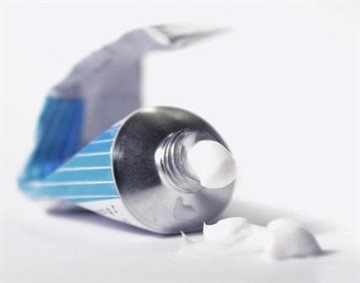
- Troxevasin and its analogue Troxerutin . Both drugs eliminate swelling and itching, thereby easing the baby’s general condition. Thanks to the action of active substances, the process of resorption of swelling occurs faster;
- Aescusan in ointment form . A highly effective product based on horse chestnut seed extract normalizes blood circulation in the affected area and promotes rapid resorption of the lump. It must be applied in a thin layer once a day, preferably at night;
- Heparin ointment and Viaton cream , which is its analogue . These products are hypoallergenic and absolutely harmless for use in very early childhood. As a result of application, the swelling disappears completely;
- Traumeel-S is a multicomponent homeopathic external preparation, which is characterized by pronounced anti-inflammatory, anti-exudative and analgesic properties. Consult a qualified physician before using it;
- gel preparation Fenistil . It will also help eliminate itching, swelling, pain and general discomfort. It must be applied in a thin layer not to the injection site itself, but to the surrounding areas of the skin.
Doctors' answers to popular questions
Why does the vaccine injection site swell?
In medical practice, it is customary to distinguish three types of post-vaccination reactions - mild, moderate, and complications.
Mild and medium are the norm and are very common in babies. Among them there are general and local reactions. The first includes an increase in body temperature, a feeling of drowsiness and weakness. And for the second - redness and thickening at the vaccination site.
The appearance of post-vaccination infiltrate is a natural reaction to vaccinations against whooping cough, tetanus and diphtheria.
The substances included in the vaccine deliberately provoke the occurrence of an inflammatory process. A larger number of cells are involved in the production of antibodies to infectious diseases, which results in a more pronounced immune effect.
Is it possible to treat the vaccination site with iodine?
An iodine mesh is recommended as a method for quickly resolving swelling. It must be applied with very thin and light strokes so as not to cause a skin burn.

Iodine
You should first make sure that there are no allergic reactions to iodine or other contraindications to its use. The procedure should be performed until the swelling completely disappears.
What should not be used to treat a lump?
Due to the risk of an abscess, you cannot treat the injection site with ichthyol ointment and Vishnevsky ointment, or perform warming procedures.
It is strictly forbidden to knead or rub the reddened area of skin.
What measures should be taken to prevent complications?

It is necessary to reliably protect the baby from infections - for the first time after vaccination, try not to visit public places and avoid playing too actively on the street.
It is recommended to vaccinate with DTP in the warm season, when the child’s body is saturated with vitamins necessary to normalize the functioning of the immune system.
However, for those babies who are prone to allergic reactions, on the contrary, it is better to vaccinate in winter.
What will help alleviate the baby’s condition at high temperatures?
An increase in temperature after vaccination always occurs. This is provoked by the fact that the immune system begins to produce special antibodies. Temperature is an excellent germ control method, as most bacteria and viruses are killed at high temperatures.
To alleviate your child’s condition, you need to give him antipyretics:
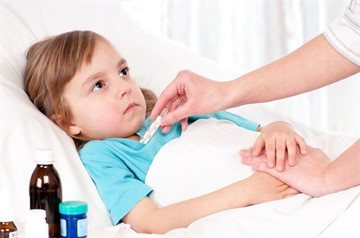
- Tsefekon suppositories . This drug can reduce fever and has an analgesic effect. The drug contains paracetamol. Lasts longer than syrup;
- Nurofen . The syrup reduces the temperature and the child can sleep peacefully. Doctors recommend giving the drug immediately after vaccination, without waiting for the temperature to rise;
- Paracetamol . The syrup can also reduce fever and have an analgesic effect. But there is one drawback: this drug often causes allergies to its constituent components;
- Panadol . This drug is available in the form of syrup and suppositories. Reduces temperature and eases the child's general condition.
Video on the topic
An allergist-immunologist tells what to do if a lump forms at the site of vaccine administration:
DPT vaccination is needed to protect a child from dangerous infectious diseases such as whooping cough, diphtheria and tetanus. One of the most common side effects is swelling and swelling at the injection site.
This reaction indicates the production of the necessary antibodies to pathogens. To speed up the disappearance of swelling, you can treat the skin area with ointments that have anti-inflammatory, anti-exudative and antimicrobial properties.
If the swelling does not go away within two weeks and is accompanied by an increase in temperature and the appearance of suppuration, you need to consult a doctor. In all other cases, this side effect will disappear within five days.
Side effects
Most parents panic very much when, after an injection, the body temperature rises sharply, the leg swells, hurts, and digestive upset occurs. How dangerous are complications after vaccination? It is important to understand that there is currently no drug to which the body does not react. Even if you introduce pure distilled water, a reaction cannot be avoided.
Normal reactions after DPT include:
- Refusal to eat.
- General malaise of the body.
- Constant crying, whims.
- Hyperthermia.
The reaction to DTP can have 3 degrees of severity, it all depends on how the body temperature rises:
- Mild reaction if temperature rises to 37.5 degrees.
- The average reaction is a temperature of up to 38 degrees.
- Severe reaction – temperature up to 40 degrees.
In case of a strong reaction, the next vaccine is given without the pertussis component; it is this that is difficult to tolerate. If pathological changes are observed on days 4–5, the child must be examined urgently.
